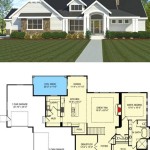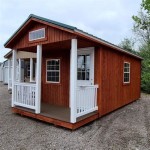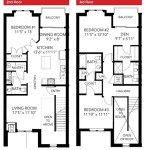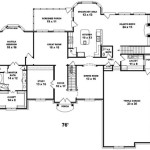Finding Floor Plans by Address: A Comprehensive Guide
The ability to locate floor plans for a specific address can be invaluable for a variety of reasons. From prospective homebuyers seeking a better understanding of a property's layout to renovators planning improvements, access to accurate floor plans provides essential information. This article delves into the methods and resources available for finding floor plans using an address, exploring the challenges involved and providing strategies for success.
Floor plans are scaled diagrams that illustrate the arrangement of rooms within a building. They typically include dimensions, wall locations, door and window placements, and sometimes fixed appliance locations. Understanding a floor plan allows individuals to visualize the space, assess its suitability for their needs, and plan modifications or renovations with greater precision. While readily available for new construction or marketing materials, obtaining floor plans for older or less documented properties can require more investigative work.
Understanding the Importance of Floor Plans
Floor plans are more than just simple diagrams; they offer a wealth of information crucial for making informed decisions about a property. For potential homebuyers, a floor plan complements listing photographs and virtual tours by providing a spatial understanding of the house. This can help determine if the layout meets their lifestyle needs, family size, and preferred room arrangements. For example, a family with young children might look for a floor plan that keeps bedrooms close together, while someone who works from home might prioritize a dedicated office space.
Beyond the initial buying decision, floor plans are essential for planning renovations, interior design, and furniture placement. Knowing the exact dimensions of rooms and the location of structural elements can prevent costly mistakes and ensure the feasibility of design ideas. This is particularly crucial when dealing with load-bearing walls or intricate architectural features. A floor plan allows contractors and designers to accurately estimate material costs and labor hours, reducing the chances of budget overruns.
Furthermore, floor plans can be beneficial for insurance purposes, providing a detailed record of the property's layout and dimensions in case of damage or loss. They can also be helpful for creating emergency evacuation plans, ensuring that occupants know the quickest and safest routes out of the building. In commercial settings, floor plans are vital for space planning, optimizing workflow, and ensuring compliance with accessibility regulations.
The absence of a floor plan can significantly hinder these processes, leading to increased costs, delays, and potentially unsatisfactory outcomes. Therefore, investing time and effort in locating or creating a floor plan is often a worthwhile endeavor.
Methods for Searching Floor Plans by Address
Several avenues can be explored when searching for floor plans using an address. The success of each method depends on factors such as the age of the property, its location, and the availability of public records. A multi-pronged approach often yields the best results.
1. Public Records and Government Agencies: Many local governments maintain records related to building permits, construction plans, and property assessments. Contacting the city hall, county clerk's office, or building department might reveal archived floor plans. These records are often digitized and searchable online, although access may require registration or a small fee. Older properties may have plans stored as physical documents, necessitating an in-person visit to the relevant agency. When contacting these agencies, be prepared to provide the full property address, including street number, street name, city, state, and zip code. The more precise the information, the easier it will be for the record keepers to locate the desired documents.
2. Real Estate Listings and Websites: Modern real estate listings increasingly include floor plans as part of the property information. Websites like Zillow, Redfin, and Realtor.com often feature detailed floor plans for properties currently on the market. Even if the property in question is not currently listed, searching for similar properties in the same neighborhood or built around the same time might provide a comparable floor plan, offering a general idea of the layout. Archived real estate listings can sometimes be accessed through these websites or through specialized real estate data providers. Be mindful that floor plans in online listings may not always be perfectly accurate or to scale.
3. Architectural and Design Firms: If the property was designed by a specific architect or built by a known construction company, contacting their offices might lead to archived floor plans. Architectural firms typically retain copies of their designs for extended periods. Researching the history of the property through local historical societies or online databases can help identify the original architect or builder. Even if the original firms are no longer in business, their records may have been acquired by other firms or historical archives. This approach can be particularly effective for landmark properties or homes with unique architectural styles.
4. Title Companies and Mortgage Providers: When a property is sold or refinanced, title companies and mortgage providers often conduct thorough research into the property's history. This research may include obtaining copies of building plans and permits. Contacting these companies in the area where the property is located might provide access to previously recorded floor plans. However, accessing this information may require demonstrating a legitimate interest in the property, such as being a prospective buyer or current owner.
5. Hiring a Professional: If all other methods fail, consider hiring a professional surveyor, architect, or real estate appraiser to create a new floor plan. These professionals have the expertise and tools to accurately measure the property and produce a detailed diagram. While this is the most expensive option, it guarantees a precise and up-to-date floor plan tailored to the specific needs of the individual. A professional floor plan is particularly valuable for complex renovation projects or when accurate dimensions are crucial.
Challenges and Considerations
Finding floor plans by address is not always a straightforward process. Several challenges can arise, hindering the search and requiring alternative strategies.
1. Age of the Property: Older properties are less likely to have readily available floor plans. Building codes and documentation requirements were less stringent in the past, resulting in fewer records being kept. Plans for older homes may exist only as physical copies in archives, making them difficult to access and search. Furthermore, older homes may have undergone renovations or additions over the years, rendering any existing floor plans outdated and inaccurate.
2. Privacy Concerns: Access to building plans and property records can be restricted due to privacy concerns. Government agencies and private companies may require proof of ownership or a legitimate reason for requesting access to these documents. In some cases, certain details of the floor plan, such as security features or specific room layouts, may be redacted to protect the privacy of the occupants.
3. Inaccurate or Outdated Information: Even when floor plans are available, they may not always be accurate or up-to-date. Renovations, additions, and alterations can significantly change the layout of a property over time. Relying on outdated floor plans can lead to incorrect assumptions and costly mistakes. It is essential to verify the accuracy of any floor plan by comparing it to the actual property and noting any discrepancies.
4. Cost and Time Constraints: Searching for floor plans can be a time-consuming and potentially expensive endeavor. Visiting government agencies, contacting various companies, and hiring professionals all require time and resources. The cost of obtaining floor plans can vary depending on the method used and the complexity of the search. Individuals should consider their budget and time constraints when choosing the most appropriate approach.
5. Availability of Digital Records: While many government agencies and companies are transitioning to digital record-keeping, not all records are readily available online. Accessing older or less frequently requested records may still require physical visits to archives and manual searches. This can be particularly challenging for individuals who live far from the property or have limited mobility.
In navigating these challenges, persistence and a willingness to explore multiple options are key. By understanding the potential obstacles and employing a strategic approach, individuals can increase their chances of successfully finding floor plans for the desired address.

Find House Plans For Your Old Blueprint Search Nethouseplansnethouseplans

Search House Plans Cottage Cabin Garage And Photos

Search House Plans Cottage Cabin Garage And Photos

House Plans How To Design Your Home Plan

20 X 40 800 Square Feet Floor Plan Google Search 20x40 House Plans With S 2bhk

Redrow Homes The Highgrove Floorplan Google Search House Layout Plans Floor

House Plans Floor Easy Search Form

Search House Plans Cottage Cabin Garage And Photos
Using Floor Plan Finder

How To Find House Plans Using Our Quick Search Tool The Plan Collection








